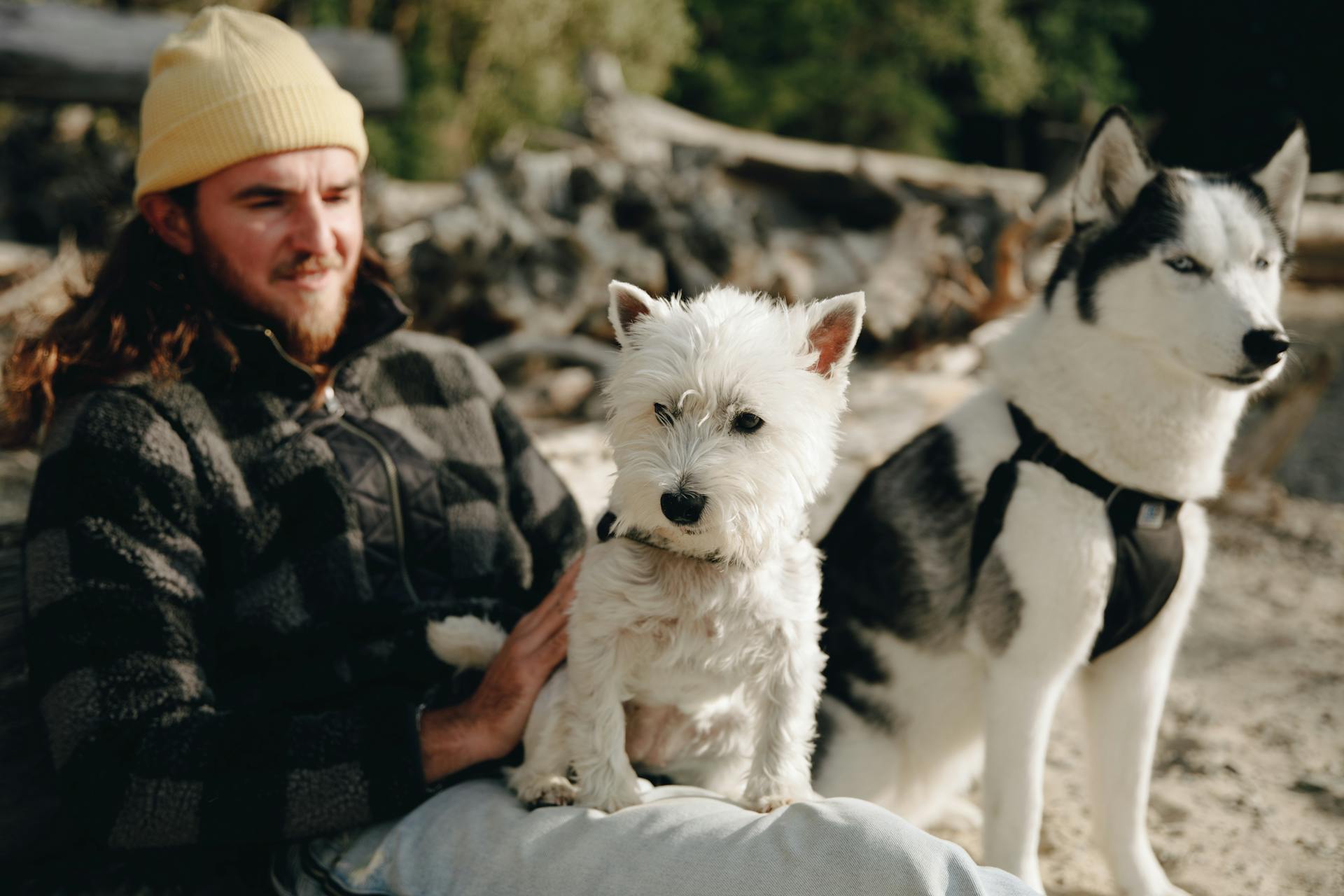
If you're considering bringing a Husky Samoyed dog into your family, you'll want to know the basics of their care and training. Husky Samoyeds are a cross between a Siberian Husky and a Samoyed, and they require regular exercise to stay happy and healthy.
They need at least 30 minutes of exercise per day, which can be a combination of walks, runs, and playtime. This breed is not suited for apartment living due to their high energy levels.
Husky Samoyeds are intelligent and trainable, but they can be stubborn at times. Consistency and positive reinforcement are key when training this breed.
Additional reading: How Much Exercise Do Husky Dogs Need
Breed Information
The Samoyed breed originated in northwestern Siberia, where they were bred to herd reindeer and pull sleds for the Samoyed people. They're a medium- to large-sized dog, weighing 35–65 pounds and standing 19–23.5 inches tall.
Their thick, double coat is a key adaptation to their cold climate origins, with a soft and fluffy undercoat and a coarser, straighter outer coat. They shed heavily twice a year, during the spring and fall.
Here are some key breed characteristics:
- Origin: Samoyed people of Siberia
- Size: Medium- to large-sized dogs
- Breed group: Working dogs
- Lifespan: 12 to 15 years
- Coat: Thick, double coat with soft and fluffy undercoat and coarser outer coat
Highlights
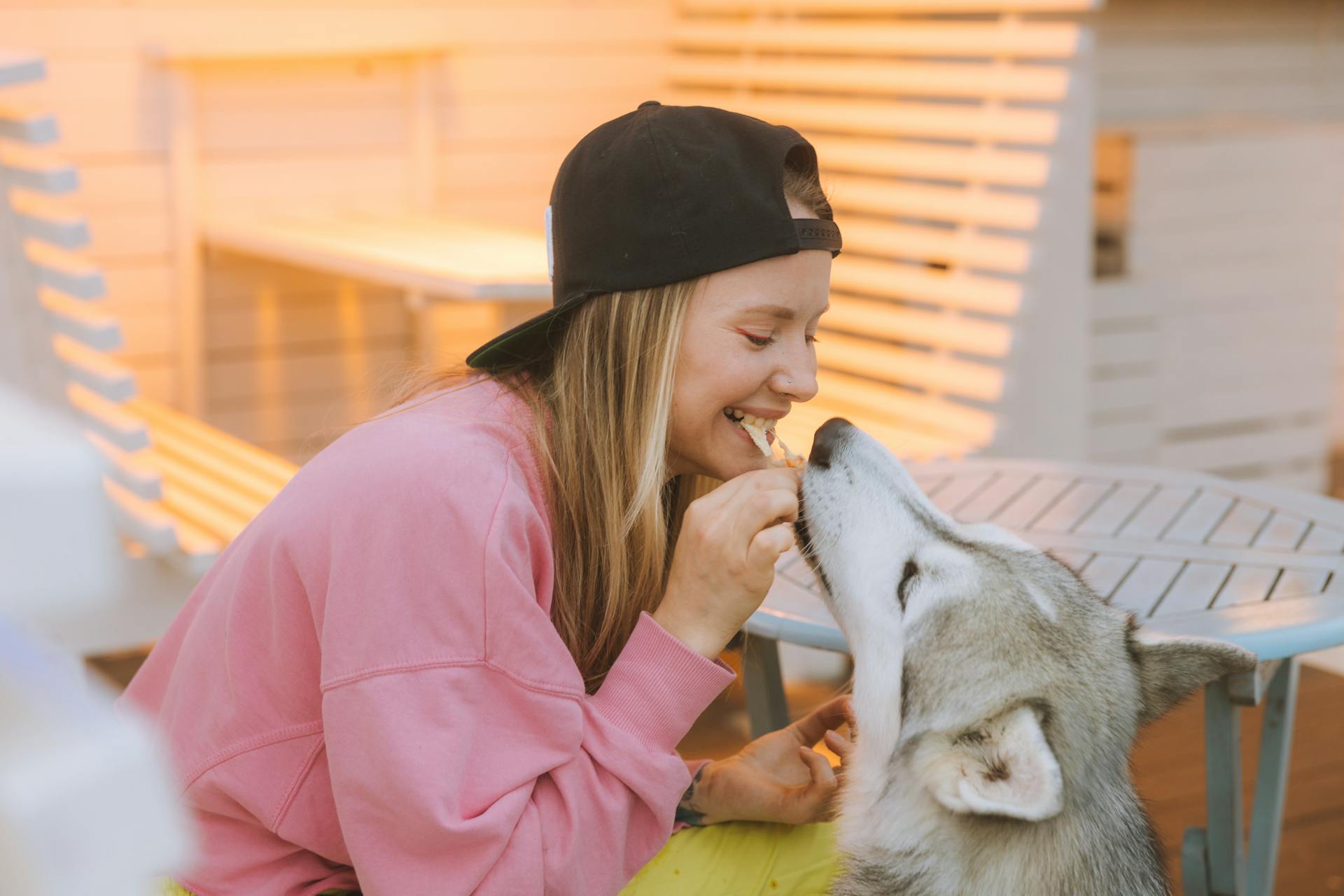
Samoyeds are known for their friendly and gentle temperament. They are very devoted to their families and make great companions. This is evident in their ability to form strong bonds with their owners and adapt to various living situations.
These dogs are active and playful, requiring at least 30 to 60 minutes of daily exercise. This can be a combination of walking, running, and playing to keep them happy and healthy.
Samoyeds are intelligent and relatively easy to train, but they can sometimes be stubborn. Positive reinforcement methods are best for training them, as they respond well to rewards and praise.
Samoyeds require a lot of grooming, especially during the shedding season. They should be brushed daily to remove loose hair and mats, and bathed as needed to keep their coat clean and healthy.
Some health problems affecting Samoyeds include hip dysplasia, elbow dysplasia, and eye problems. Regular checkups with a veterinarian are essential to monitor their health and catch any potential issues early on.

Here are some key facts to keep in mind when considering a Samoyed as a pet:
Lineage
The Samoyed breed has a rich and fascinating lineage that dates back thousands of years. The progenitor of the Samoyeds was the Nenets Herding Laika, a reindeer herding spitz commonly used throughout northern Siberia.
These early dogs were incredibly resilient and played a crucial role in the lives of the Nenets people. DNA evidence confirms that Samoyeds are a basal breed that predates the emergence of the modern breeds in the 1890s.
A genomic study of two dog specimens that are nearly 100 years old found that they are related to two specimens dated 2,000 years old and 850 years old. This suggests a remarkable continuity of the lineage in the region.
The Samoyed breed has its roots in the ancient arctic lineage, which still lives on in the modern Samoyed dog.
Health and Care
A Husky Samoyed dog requires regular exercise, with at least two hours of physical activity per day, to keep them happy and healthy.
They thrive in colder climates, love running through the snow, and are well-suited for cold climates due to their Nordic heritage.
However, they can be sensitive to heat and should not exercise strenuously in extremely hot temperatures.
To prevent heatstroke, monitor your dog for signs of overheating, especially in hot weather.
Regular grooming is essential, with daily brushing to maintain the integrity and beauty of their fur.
A de-shedding brush can help remove excess undercoat, especially during warmer months, to reduce shedding and keep your dog cool.
Some potential health concerns to be aware of include genetic predispositions to eye problems, heart problems, hip dysplasia, and kidney disease.
It's essential to address these concerns and any others that may arise with your Husky Samoyed dog.
Consult with your veterinarian before adding any supplements to your dog's diet, especially glucosamine and omega-3 supplements, which can help promote joint health in very active dogs.
Health and Care
Regular veterinarian visits are crucial for your Samoyed's health and well-being. This will help you stay on top of any potential issues and catch them early.
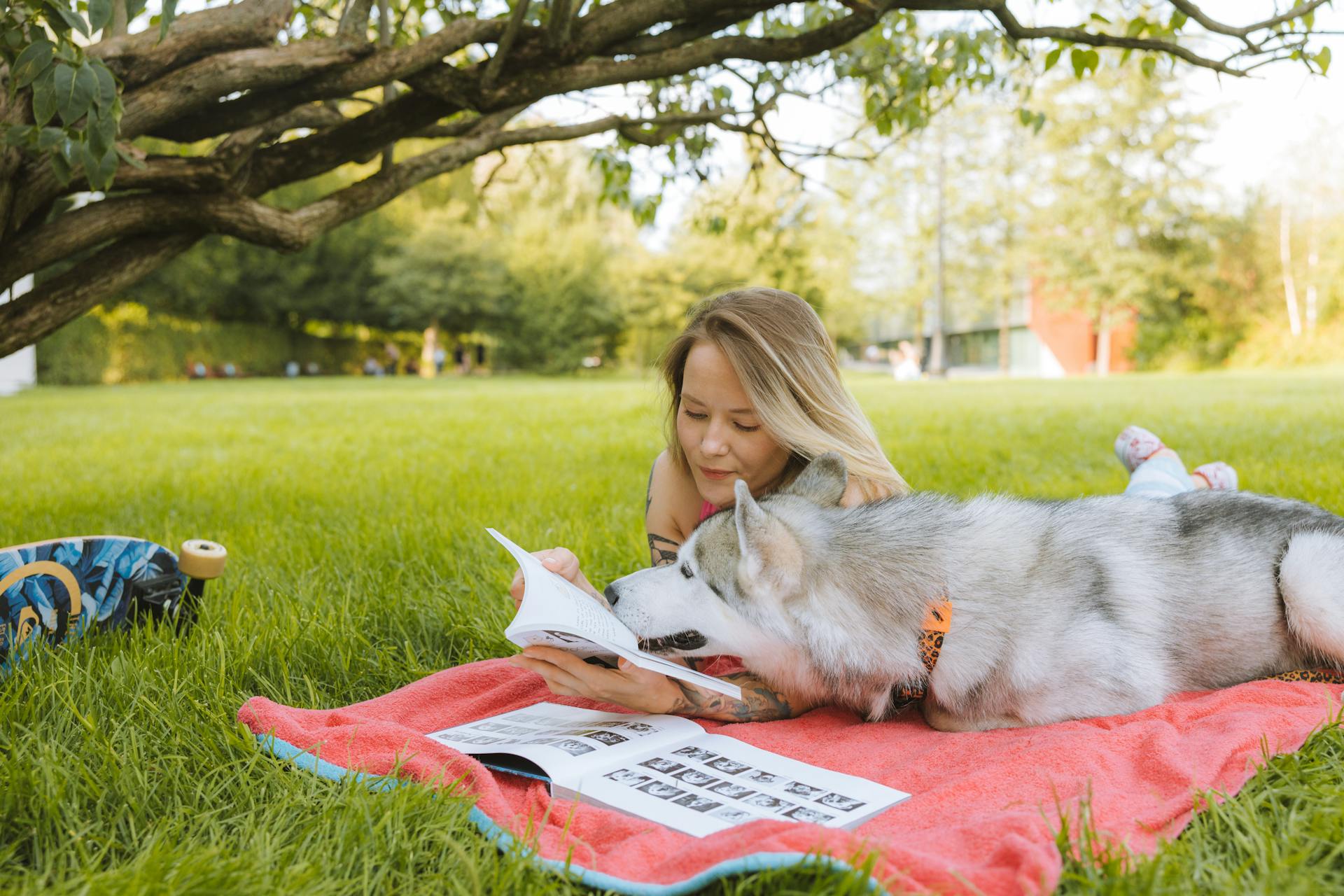
Your Samoyed will grow at its own unique rate, so don't worry if it's a little ahead of or behind the estimated weights and heights listed in the growth chart.
To ensure your Samoyed reaches its full potential, make sure to feed it a high-quality diet that meets its nutritional needs. A balanced diet will help support its growth and overall health.
Samoyeds typically reach their full height between 9-12 months of age, with males standing between 21-23.5 inches tall and females standing between 19-21 inches tall.
Here's a rough estimate of your Samoyed's weight at different ages:
Adult Samoyeds typically weigh between 35-65 pounds, with males weighing between 45-60 pounds and females weighing between 35-50 pounds.
Health
Samoyeds are prone to several health issues that you should be aware of as a responsible pet parent. Diabetes mellitus, similar to human Type I, is a concern for middle-aged Samoyeds, with a mean age at diagnosis of seven years.
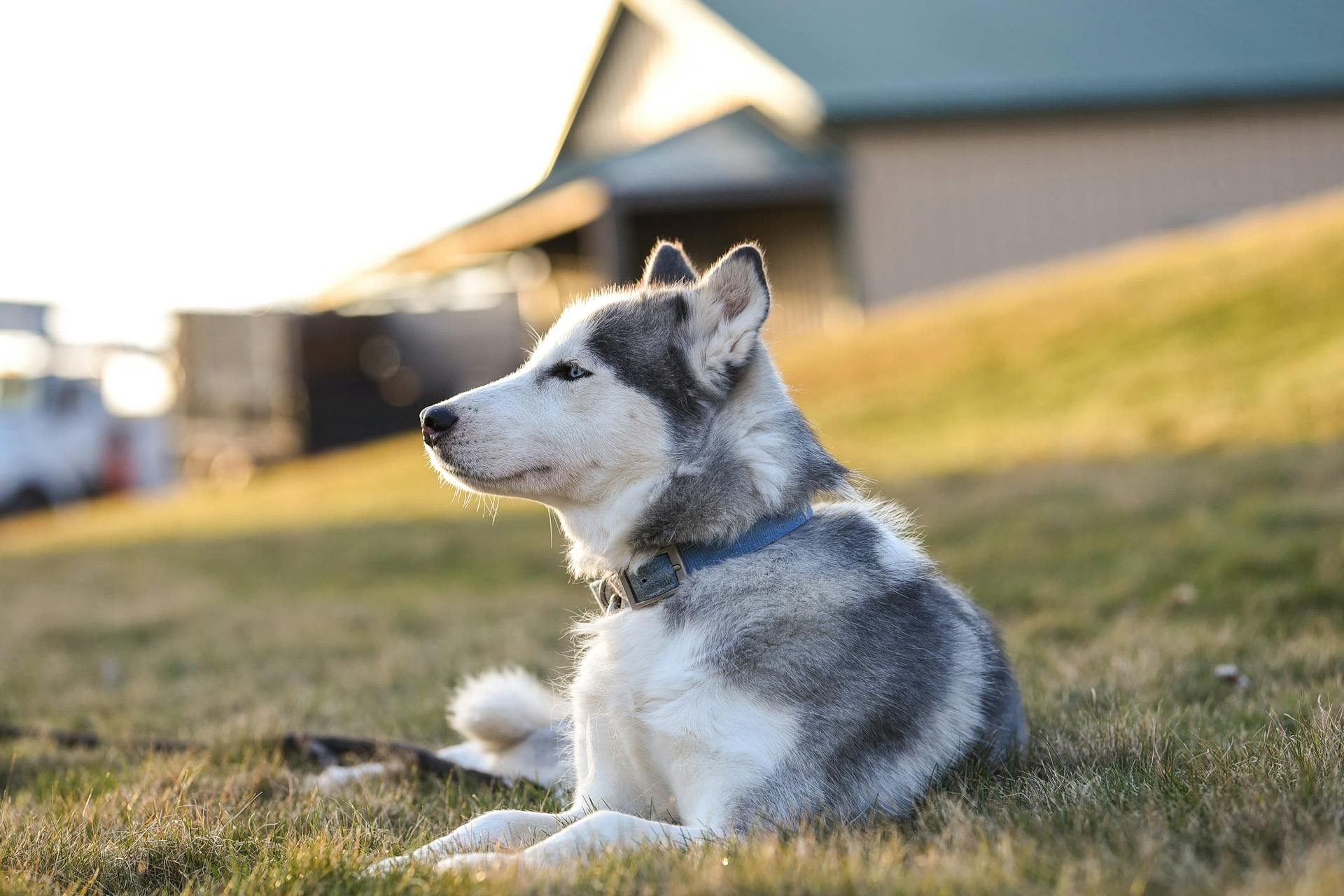
Progressive retinal atrophy (PRA) is a genetic disease that can lead to blindness in Samoyeds, with symptoms appearing between two and five years of age. This condition is caused by a frameshift mutation in the RPRG locus of the X chromosome.
Samoyeds can also develop short legs in conjunction with eye abnormalities, a genetic defect at the COL2A1 locus that leads to disproportionate dwarfism. This condition is recessive, meaning it only affects homozygous dogs.
Pulmonary stenosis is a heart condition that occurs more frequently in Samoyeds than in other breeds, causing symptoms such as shortness of breath and rapid fatigue.
Here are some common health issues that Samoyeds may face:
It's essential to monitor your Samoyed's health and take preventative measures, such as regular exercise and a balanced diet, to minimize the risk of these conditions.
Feeding
Feeding your Samoyed is a crucial part of their overall health and well-being.
The recommended daily amount of food for a Samoyed is 1.5 to 2.5 cups of high-quality dry food daily, divided into two meals.
It's essential to measure your Samoyed's food and feed them twice a day, rather than leaving food out all the time, to keep them in good shape.
A Samoyed's ideal weight is typically between 35 and 65 pounds, and their food intake should be based on this weight.
For very active Samoyeds, adding glucosamine and omega-3 supplements, such as fish oil, can help promote joint health.
Always talk to your veterinarian before adding a supplement to your dog's diet, as they can help determine the best course of action.
A good-quality diet for a Samoyed should have 22 to 24 percent protein and 12 to 15 percent fat, and be slow in growth to prevent bone disorders and injury.
Samoyed puppies need to be fed a high-quality puppy food that meets nutritional standards set by the Association of American Feed Control Officials (AAFCO), and older Samoyeds should be offered a high-quality senior food.
If you're unsure whether your Samoyed is overweight, give them the eye and hands-on tests: look down at them and see if you can see a waist, and place your hands on their back to feel their ribs.
Consider reading: What to Feed Dogs If Out of Dog Food
Ear Care
Ear Care is crucial for Samoyeds, as they tend to get their ears dirty after every bath, splashing in water, or rolling around in the snow.
To prevent ear infections, it's essential to clean your Samoyed's ears diligently after these activities.
Average Lifespan
Samoyeds are wonderful companions, but like all breeds, they have their own set of needs and potential health issues.
The average lifespan of a Samoyed is 12 to 14 years, which is a good amount of time to enjoy the companionship of these friendly dogs.
Unfortunately, Samoyeds are more prone to certain genetic disorders and hereditary conditions, which can affect their quality of life if left untreated.
Some of the most common health issues affecting Samoyeds include diabetes, hypothyroidism, elbow and hip dysplasia, eye cataracts, and glaucoma.
Glaucoma is a painful condition caused by elevated pressure within the eye and can lead to blindness if left untreated.
If your Samoyed is diagnosed with glaucoma, eye drops and medication prescribed by your veterinarian can help to manage the condition and relieve their discomfort.
Here are some common health issues that can affect Samoyeds:
- Diabetes
- Hypothyroidism
- Elbow and hip dysplasia
- Eye cataracts
- Glaucoma
Grooming and Coat
The Samoyed's thick coat sheds heavily, requiring daily brushing when shedding and regular brushing to maintain its integrity.
Daily brushing is necessary, especially when the coat is shedding, and once or twice a week when it's not. This helps prevent matting and tangling.
To bathe your Samoyed, you'll need to thoroughly soak the coat, rinse out the shampoo, and let it dry completely, which can be a time commitment. You may want to consider hiring a professional groomer to take some of the burden off.
Brush your Samoyed's teeth at least two or three times a week to remove tartar buildup and bacteria, and daily brushing is even better to prevent gum disease and bad breath.
Trim your Samoyed's nails once or twice a month to prevent painful tears and other problems, and be careful not to cut too far, as dog toenails have blood vessels in them.
To make grooming a positive experience for your Samoyed, handle their paws frequently, look inside their mouth, and make sure to praise and reward them.
A weekly exam will help you spot potential health problems early, so check for sores, rashes, or signs of infection on the skin, nose, mouth, eyes, and feet.
A Samoyed's coat can be pure white, white and biscuit, cream, or biscuit, and they have a long straight-haired topcoat and a dense soft undercoat.
Here's a quick rundown of the grooming needs for your Samoyed:
- Daily brushing, especially when shedding
- Regular brushing to maintain coat integrity
- Bathing every 8 weeks or as needed
- Teeth brushing at least 2-3 times a week
- Nail trimming once or twice a month
By following these grooming tips, you'll be able to keep your Samoyed's coat looking its best and prevent potential health problems.
Exercise and Activities
Samoyed husky dogs are natural athletes and need plenty of exercise to stay happy and healthy. They can compete in dog agility trials.
They're also great at carting, which involves pulling a cart or sled. With some training, they can even participate in herding events.
Herding instincts are strong in these dogs, and they can be trained to compete in herding trials if they exhibit basic herding instincts.
Getting Started in Sports
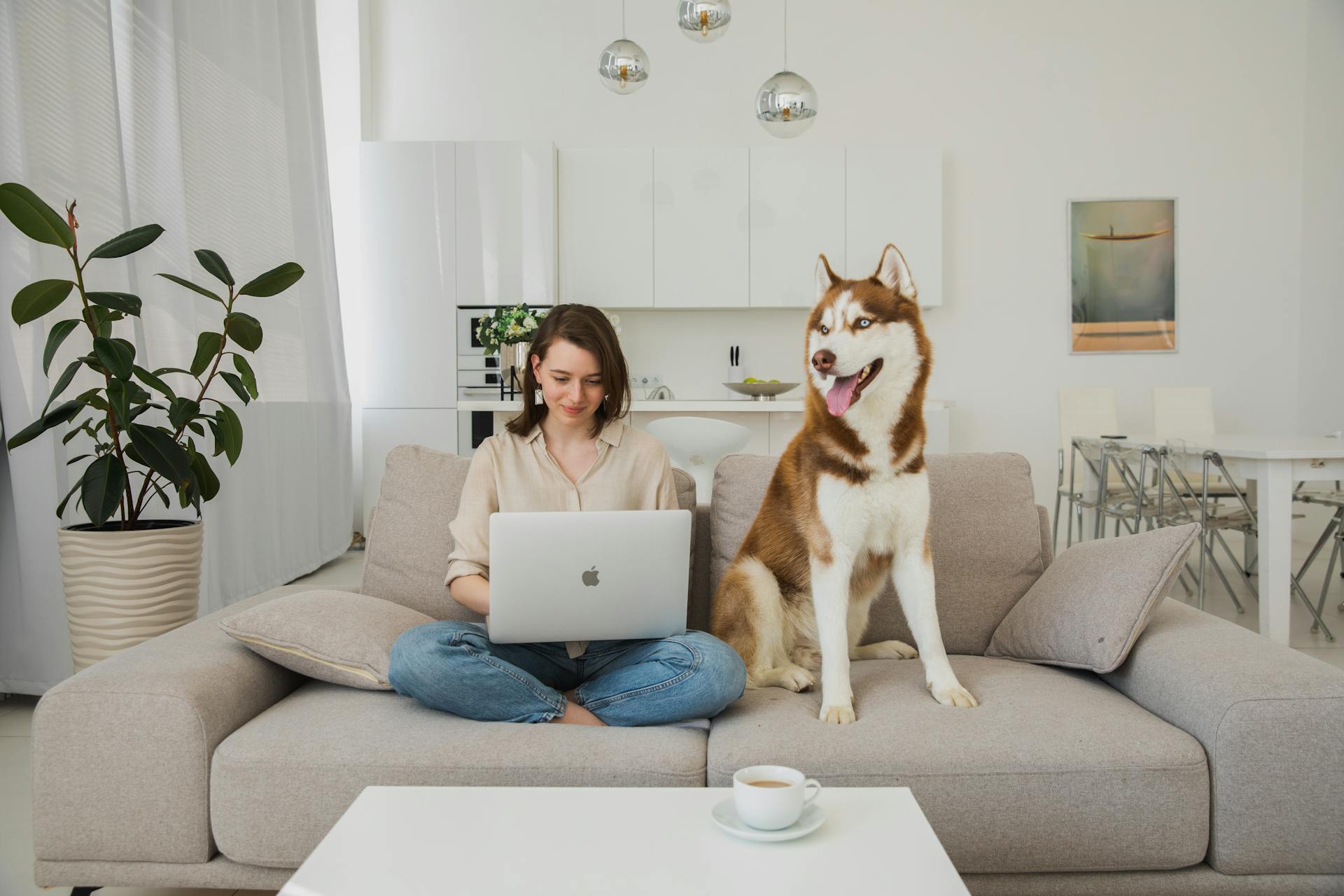
Getting Started in Sports is an exciting step for you and your Samoyed. You can begin by introducing them to dog sports through non-competitive herding tests to measure their herding instincts and trainability.
These tests can help you determine if your Samoyed has the potential to excel in herding events. Samoyeds can be trained to compete in herding trials if they exhibit basic herding instincts.
To get started, consider enrolling in a dog sports program or event, such as carting, agility trials, or obedience training. These activities can help you and your Samoyed build a strong bond and develop new skills.
Here are some dog sports options to consider:
- Carting
- Agility trials
- Obedience training
- Tracking
- Mushing
- Herding events
Remember to start with introductory classes or workshops to learn the basics and ensure a smooth transition for both you and your Samoyed.
Exercise Needs
Samoyeds are energetic dogs that require regular exercise to stay happy and healthy. They can compete in dog agility trials, carting, obedience, showmanship, flyball, tracking, mushing, and herding events.
Samoyeds excel in dog sports that challenge their physical and mental abilities. Herding instincts and trainability can be measured at non-competitive herding tests.
Samoyeds need daily exercise to prevent boredom and destructive behavior. They can be trained to compete in herding trials if they exhibit basic herding instincts.
Samoyeds love to run, jump, and play, making them perfect for active families.
Frequently Asked Questions
What is a Samoyed husky mix called?
A Samoyed Husky mix is commonly known as a Samusky, Samsky, or Samoyed Husky mix. This unique breed combines the best traits of its parent breeds, making it a popular choice for many dog owners.
Are Samoyed dogs related to huskies?
While they may resemble each other, Samoyeds and Siberian Huskies are distinct breeds with unique characteristics. Learn more about their differences and what sets them apart
How big will a Samoyed Husky mix get?
A Samoyed Husky mix typically grows to be 20-24 inches tall and weighs between 45-60 pounds. Expect a medium-sized dog with a sturdy build.
Are Samoyeds vocal like huskies?
Samoyeds are known for barking, unlike their howling relatives, the Siberian Huskies. They are a vocal breed that requires attention to their communication needs.
Featured Images: pexels.com


